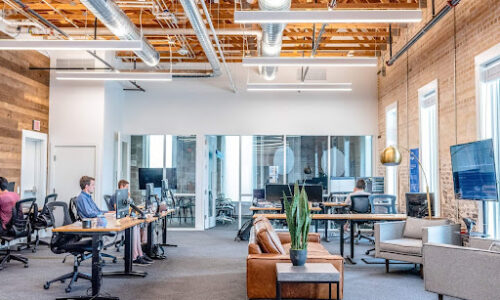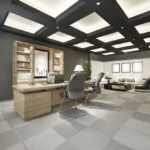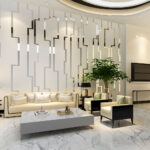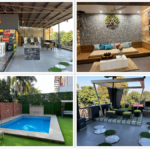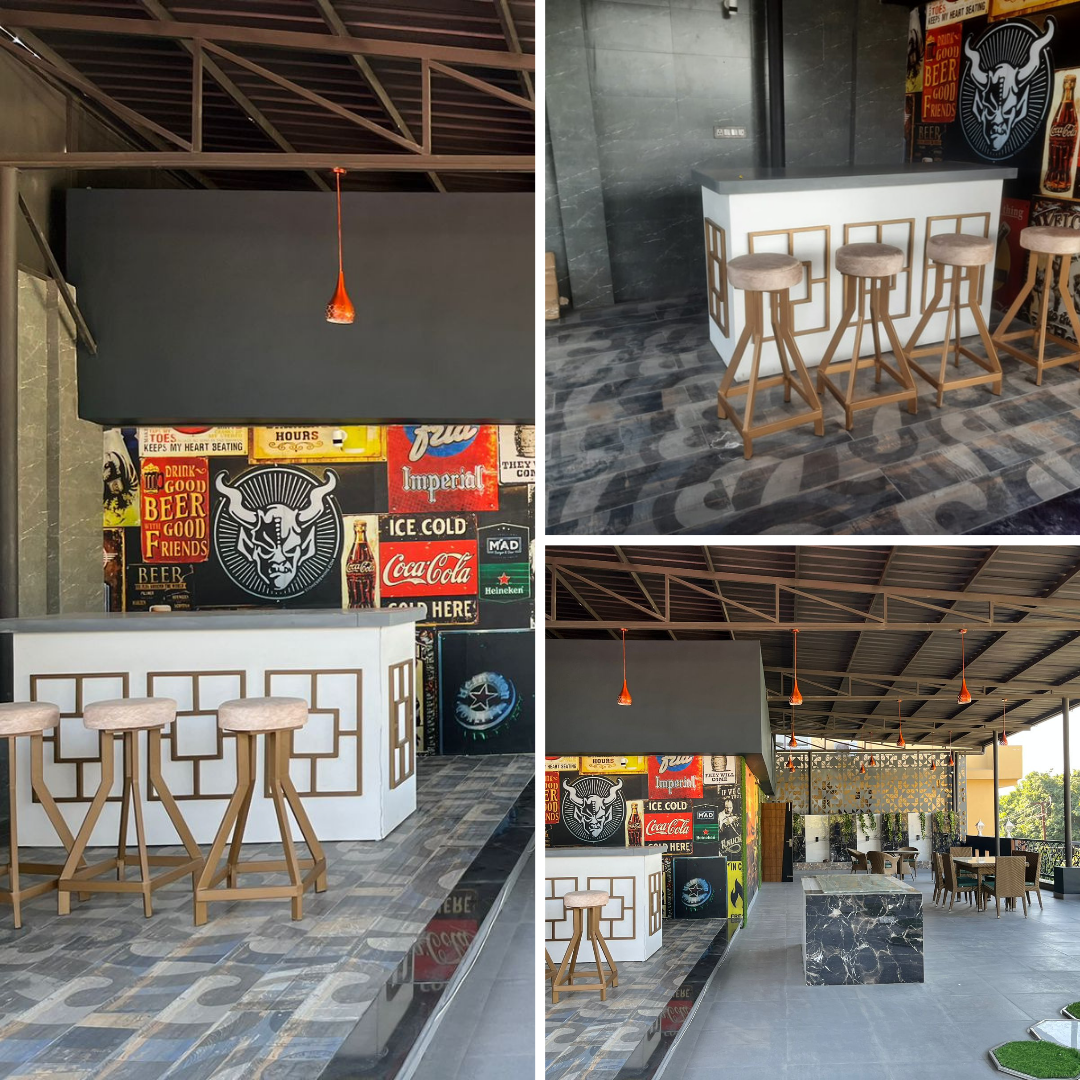The Role of Colors in Office Interiors and Employee Productivity
- amodini
- 0 Comments
Colors are more than just decoration in an office. They play a very important role in shaping how people feel, think, and perform at work. The colors used in office interiors can affect mood, energy, creativity, focus, and even relationships among employees. Businesses are now paying more attention to office design, not only for aesthetic reasons but also for productivity and employee well-being.
In simple terms, colors are not just for beauty; they are psychological tools that influence human behavior. According to studies in color psychology, each color has a specific impact on emotions and productivity levels. For companies that want motivated and happy employees, choosing the right color scheme is essential.
Understanding Color Psychology in Office Interiors
Color psychology is the study of how different colors influence human emotions and actions. For example, some colors can make people feel calm, while others may create excitement or urgency. This principle is applied in marketing, branding, healthcare, education, and now widely in office design.
The workplace is where people spend most of their waking hours. If the environment is dull, stressful, or uninspiring, it directly affects performance. On the other hand, well-chosen colors in interiors can improve focus, reduce stress, and even spark innovation. Understanding these effects helps employers build better workplaces.
How Colors Influence Employee Productivity
Colors affect both the physical and mental state of employees. They can increase or decrease alertness, impact creativity, and even shape communication styles. Below are some direct ways colors influence productivity:
- Mood Regulation: Warm colors may increase energy, while cool colors can create a calm environment.
- Focus and Concentration: Neutral tones reduce distractions and keep employees focused on tasks.
- Creativity Boost: Bright and lively colors like yellow and orange can inspire new ideas.
- Stress Management: Soothing shades such as light blue and green help in reducing workplace stress.
This shows that color selection is not only about aesthetics but also about creating a balanced and supportive work environment.
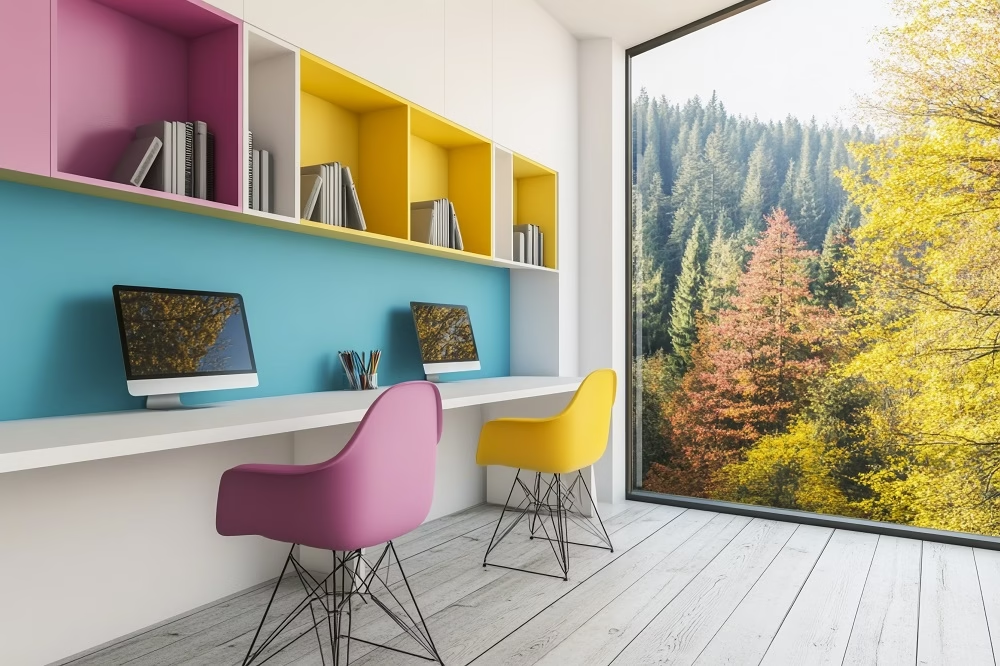
Best Colors for Office Interiors and Their Impact
Different colors have different meanings and impacts. Let us understand which colors are commonly used in office interiors and what effect they bring to productivity.
| Color | Psychological Effect | Impact on Employees | Best Areas to Use |
| Blue | Calm, Trust, Stability | Reduces stress, improves focus | Meeting rooms, quiet zones |
| Green | Balance, Growth, Relaxation | Reduces eye strain, relaxes mind | Open workspaces, break areas |
| Yellow | Optimism, Energy, Creativity | Sparks innovation, builds positivity | Creative departments, brainstorming rooms |
| Red | Passion, Urgency, Power | Increases energy, may cause anxiety if overused | Sales areas, activity zones |
| White | Clean, Spacious, Neutral | Provides clarity, may feel too sterile | Reception areas, hallways |
| Gray | Balance, Neutrality | Professional look, but may feel dull | Executive offices, conference rooms |
| Orange | Enthusiasm, Motivation | Encourages teamwork, builds energy | Collaboration areas, lounges |
This table shows that each color has a purpose. The right combination creates a productive, comfortable, and visually appealing environment.
Blue: The Color of Focus and Calmness
Blue is one of the most popular colors in office interiors. It is known for its calming and soothing effect. Many corporate companies use shades of blue because it creates a sense of trust, reliability, and stability. Employees working in blue-colored environments often feel less stressed and more focused on detailed tasks.
Research shows that blue reduces anxiety and supports logical thinking. This is why many banks, finance companies, and IT firms prefer blue interiors. It is also an ideal choice for meeting rooms and offices where concentration is required.
Green: The Color of Balance and Relaxation
Green is strongly connected with nature and balance. It has a refreshing and relaxing impact on employees. When people work long hours, green can reduce eye strain and mental fatigue.
Adding green plants or using natural green tones in office walls creates a more natural and soothing environment. Employees surrounded by green are often more creative and less stressed. According to biophilic design, nature-inspired interiors improve both productivity and employee satisfaction.
Yellow: The Color of Energy and Creativity
Yellow is the color of brightness, optimism, and innovation. It is often used in offices where brainstorming, creativity, and fresh ideas are required. Design and advertising agencies use yellow shades to keep their employees motivated and inspired.
However, yellow should not be used in very large amounts as it may create feelings of anxiety. Instead, it works best as an accent color on walls, furniture, or creative corners. It stimulates energy and adds positivity to the workplace.
Red: The Color of Power and Energy
Red is a very strong and stimulating color. It increases heart rate and creates a sense of urgency. In office settings, red can boost energy and encourage quick action. It is often used in sales departments or areas where active decision-making happens.
But too much red can also make people feel stressed or anxious. Therefore, it should be used carefully, mostly in small areas or as highlights in office interiors. Red works well in break rooms, gyms, or collaborative spaces where energy levels need to be high.
White and Gray: The Colors of Simplicity and Professionalism
White is often associated with cleanliness and simplicity. It makes spaces look bigger and more open. Many modern offices use white walls with colored furniture to create balance. However, if used alone, white may feel too sterile or lifeless.
Gray, on the other hand, provides a professional and neutral atmosphere. It adds a sense of balance and maturity. But like white, too much gray can look dull. The best approach is to combine white and gray with brighter colors for a more lively and engaging workplace.
Orange: The Color of Enthusiasm and Motivation
Orange is a vibrant mix of red’s energy and yellow’s creativity. It promotes enthusiasm, motivation, and teamwork. Offices that want to build collaboration often use orange in lounge areas, cafeterias, or open spaces.
It creates a warm and inviting environment where employees feel more connected. Orange should not be overused, but when applied in the right proportion, it brings a fresh energy to the workspace.
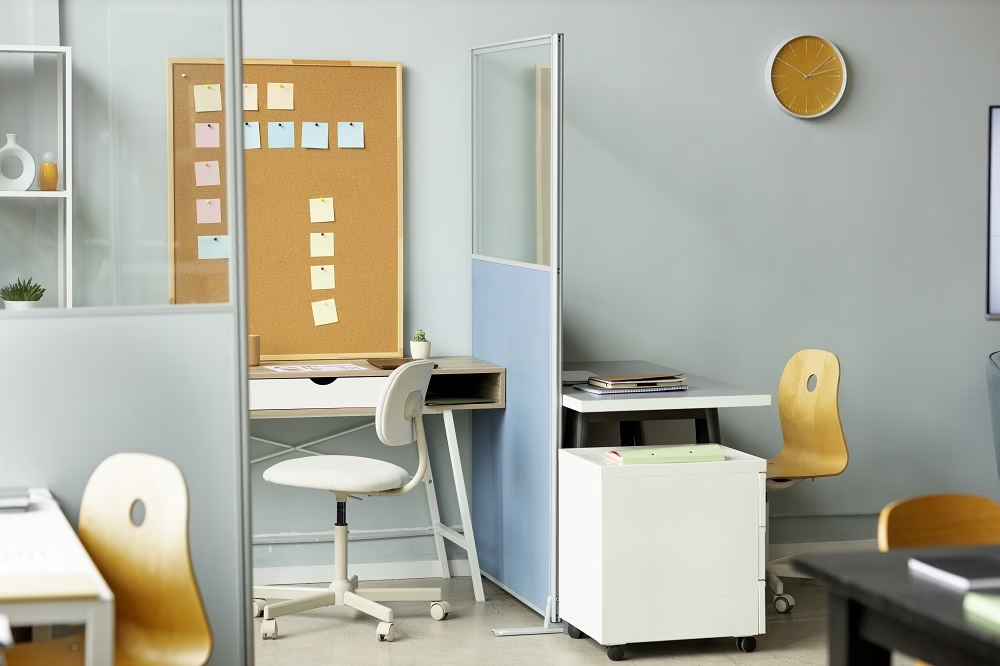
How to Choose the Right Color Scheme for Your Office
Choosing colors for office interiors should not be random. It requires planning based on the type of work, company culture, and employee needs. Here are some simple tips:
- Understand Your Work Culture– Creative companies may use bright colors, while law firms may prefer calm and neutral tones.
- Mix and Balance– Combine bright and neutral shades to avoid overwhelming employees.
- Use Natural Elements– Add indoor plants, wooden textures, or natural light for balance.
- Consider Employee Feedback– Employees feel more comfortable when they have a say in design choices.
- Test Before Applying– Use small areas to test color effects before applying them throughout the office.
Also Read:
- What Is a Mood Board in Interior Design?
- What Is Modern Classic Interior Design?
- What is Green Interior Design?
- What Are the Different Materials Used for Interior Design?
- Is Interior Architecture the Same as Interior Design?
Conclusion:
Colors are not just about style in office interiors. They are powerful tools that affect emotions, behavior, and performance. The right color scheme can reduce stress, increase creativity, and improve teamwork.
Employers who understand the role of colors and apply them wisely will notice better productivity, happier employees, and stronger company culture. Whether it’s the calming blue, refreshing green, or energizing yellow, each color contributes to a workplace that supports both comfort and efficiency.

